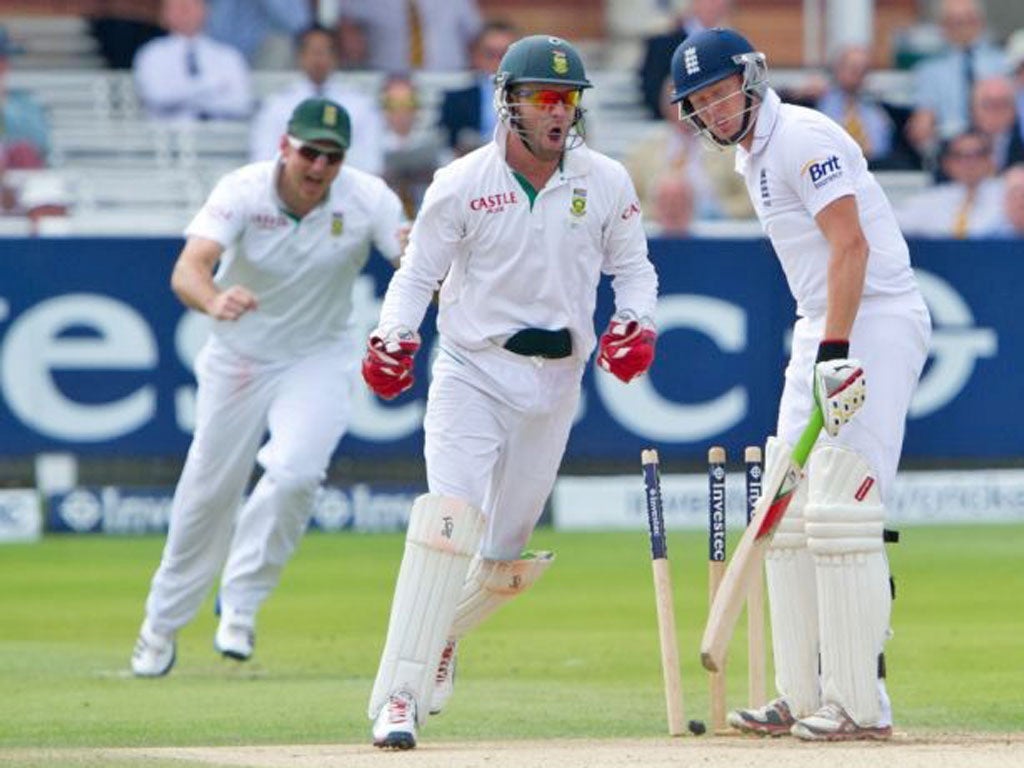How South African teams went from global outcasts to top of the world
Having seen apartheid first-hand, Paul Martin revels in a multi-racial squad's rise to No 1 – and charts milestones on that road

World No 1 at Test level. For South Africa, it is so much more than a sporting achievement; rather, it is the end product of a difficult story of twists and turns in the battle against apartheid.
Watching this mace-wielding multi-racial team parade joyously around the Lord's boundary on Monday evening was a deeply emotional experience. Memories of the "bad old days" came flooding back.
I recalled many hours spent on the bumpy, dusty fields of the Cape Flats, where the pitches were made of matting and the outfields overlapped, so that boundary fielders from one match were standing close to the wickets of the neighbouring game. Appeals were not "Howzat!" but deafening bellows of "Umi-i-i-i-re!"
These were leagues for non-white players in an era when it was illegal for blacks and whites to play together. I was one of a tiny handful of whites who had defected from the elite cricket set-up. As a cricket-mad university student, and a first-class umpire, deprived of seeing South Africa compete internationally, I had been "converted" to the cause by the leader of the non-racial cricket movement, Hassan Howa.
The Basil D'Oliveira affair followed and gave impetus to South Africa's impending isolation. In 1970 South Africa beat Australia 4-0, but that was the end of its official international cricket for two decades. Backed by secret government money, South Africa's white cricket chiefs tried to flex their sporting muscles (and defy world pressure) through a succession of rebel tours by Australians, West Indians and Englishmen under Mike Gatting.
Weeks after the Gatting tour fiasco, President F W de Klerk unbanned the ANC and agreed that Nelson Mandela would soon be released. It took the former prisoner four years of tortuous negotiation to become the country's democratically elected president in 1994.
Even before that Mandela had chosen to give cricket his unqualified support as a way of uniting hearts and minds. He urged India to invite South Africa's almost entirely white team for three ODIs in 1991, then persuaded West Indies to host them for a Test.
When Mandela agreed to canvass for a multiracial Olympic team to go to Barcelona in 1992, it symbolised a changing of the guard, and highlighted sport's role in it. In 1994 he gave a presidential send-off to the first post-apartheid cricket tour party to England. In 1995 he donned the once-reviled Springbok jersey, pictured, as the rugby team won the World Cup in Johannesburg – a famous scene in "Invictus".
"Sport is part and parcel of nation-building," Mandela told me during that 1994 send-off. "We see these young men as representing our future – a society where everyone can reach for the top."
But Mandela gave tacit support to a form of reverse discrimination when he told me: "We are saying that the selectors must be broad-minded and make sure that the entire population is represented."
Cricket – though now open to all races – did not have a level playing-field. Decades of segregation and economic inequality put non-white players at a severe disadvantage. Lack of experience of top-class conditions, of coaching, of nutrition, of self-confidence, all took their toll.
South Africa became the Proteas, no longer using the "white" term, Springboks. But trouble continued in developing true equality. A provincial quota system was introduced to fast-track promising black players. Though it had produced the odd gem, like paceman Makaya Ntini, the take-up of the game in black townships was disappointing. The quota system, or a feeling that being white was a disadvantage, saw the exodus of the likes of Kevin Pietersen and Jonathan Trott.
Now, though, South Africa are heroes again – including non-white players like this week's man-of-the-match Vernon Philander and man-of-the-series Hashim Amla. True, one is from the minority mixed-race community, the other from the minority Asian community.
Good black players are emerging. With selections now purely on merit, care and consideration are given to the sensitivities and background of each player. Coach Gary Kirsten, fresh from the sports-politics of India, has been invaluable ... which means Monday's scenes at Lord's may only be the start.
Subscribe to Independent Premium to bookmark this article
Want to bookmark your favourite articles and stories to read or reference later? Start your Independent Premium subscription today.

Join our commenting forum
Join thought-provoking conversations, follow other Independent readers and see their replies